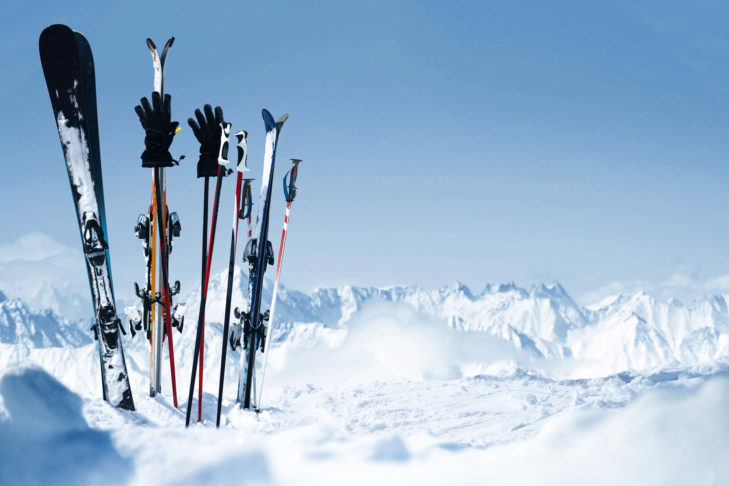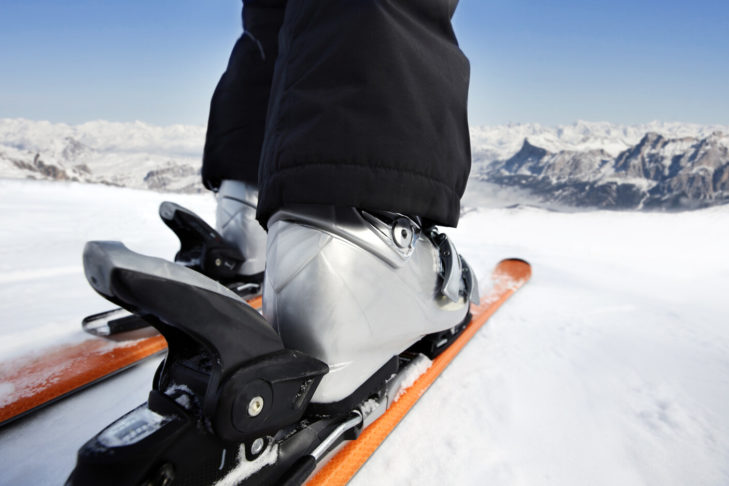Winter sports equipment from skis to boots needs good care so that it stays intact for a long time and is ready for the slopes again after the summer months. SnowTrex knows the most important rules to keep the valuable material durable.
Rule of thumb
Any material requires regular care to last a long time. Even if it is not used frequently. Ski equipment is exposed to strong stresses such as cold, moisture, and impacts. Regular ski care is therefore essential. On ski holidays, at least drying skis and boots is a daily task. But at the end of the season at the latest, the following applies to skis, boards, clothing, and boots: clean, dry, care for, store.
In the following clip, a professional shows how winter sports enthusiasts can best prepare their skis equipment for the storage phase in summer:
Please also note that by using our services and integrating the YouTube API Services, the YouTube Terms of Service and the YouTube API Services Terms apply and your use of our website is deemed to be acceptance of these terms.
Protect the surfaces and edges
Before skis and boards are stored, the material should be prepared. To achieve this, remove coarse dirt from the skis and dry them. Afterwards, the edges should be sanded again with an edge grinder so that they are not susceptible to flash rust. In addition, the base should be reconditioned at the end of the season and small scratches and grooves have to be repaired as well. If the tread is then hot-waxed again at the end, it is optimally preserved for the summer months (do not brush it off!). If you don’t have the confidence to do this work or don’t have the equipment at home, it’s best to take the slats to a specialist shop for servicing. But if you do trust in your abilities, SnowTrex will be explaining in detail on how waxing and grinding of the ski’s works and which different types of wax are available.
Furthermore, don’t forget to tighten the ski brakes with rubber bands so that the ski’s pretension is not lost bit by bit.
Watch the bindings!
Dirt can affect the springs of the ski binding and thus change the release values, so clean the binding with water before storing it. To maintain the mechanism, it can also be sprayed with a special spray. Before using it again, the binding should also be adjusted by a professional.
Clean ski and snowboard boots
Ski and snowboard boots must also be completely clean and dry before they are stored. Who wants to find mould in their inner boot after the summer? Therefore, you should remove the inner shoe from the shell or outer shoe and let it dry for several days. If you wish, you can also spray the sole and the inner shoe with a disinfectant spray. The outer shoe will also benefit from being cleaned of soil, road salt and other dirt. Only when all parts of the shoe are clean and dry should they be reassembled and stored with closed buckles or fixed lacing.
Stowing your equipment
Ski or snowboard equipment should always be stored in a dry and dark room. Dry cellar rooms or attics are best suited. Garden sheds or garages are generally not recommended. In rooms with strong temperature fluctuations, there is a risk of condensation forming on the material and rust developing. Plastics react to UV radiation, so too much exposure to light should be avoided when storing.
Skis can be stored individually or tied together with special neoprene straps that lie between the steel edges of the two skis, preventing ski on ski. Ideally, the skis spend the summer standing up.
Store accessories correctly
Protective equipment such as helmets, ski goggles and gloves also need to be looked after. Before the helmet disappears into the cupboard or cellar, it should be thoroughly cleaned and ideally disinfected. With some models, the pads can be removed and washed separately.
Ski goggles should only be cleaned with a microfibre cloth. The antifog coating on the inside should be rubbed as little as possible. For gloves with leather trim, regular leather care is recommended.
With all protective equipment, it is important to look out for small cracks or defects that can impair protection. A helmet with a crack in the shell should definitely be replaced.
Care for ski clothing
Ski clothing can be washed in the washing machine or dry cleaner. This also applies to third-layer jackets and trousers that do not lie directly against the skin. Only gentle detergents should be used for washing, and no fabric softener under any circumstances.
For hardshell jackets and trousers, the impregnation should be refreshed after washing. There are special textile detergents that already contain the impregnation protection. However, depending on the outer material and manufacturer, a separate treatment with impregnation spray and subsequent fixing blow-drying is recommended.
The material is now dried, cleaned and safely stored in the cellar or attic. Great! But the summer sleep for skis and boots can be short. In some glacier ski resorts in the Alps there is the possibility to have fun on the boards even in summer.






